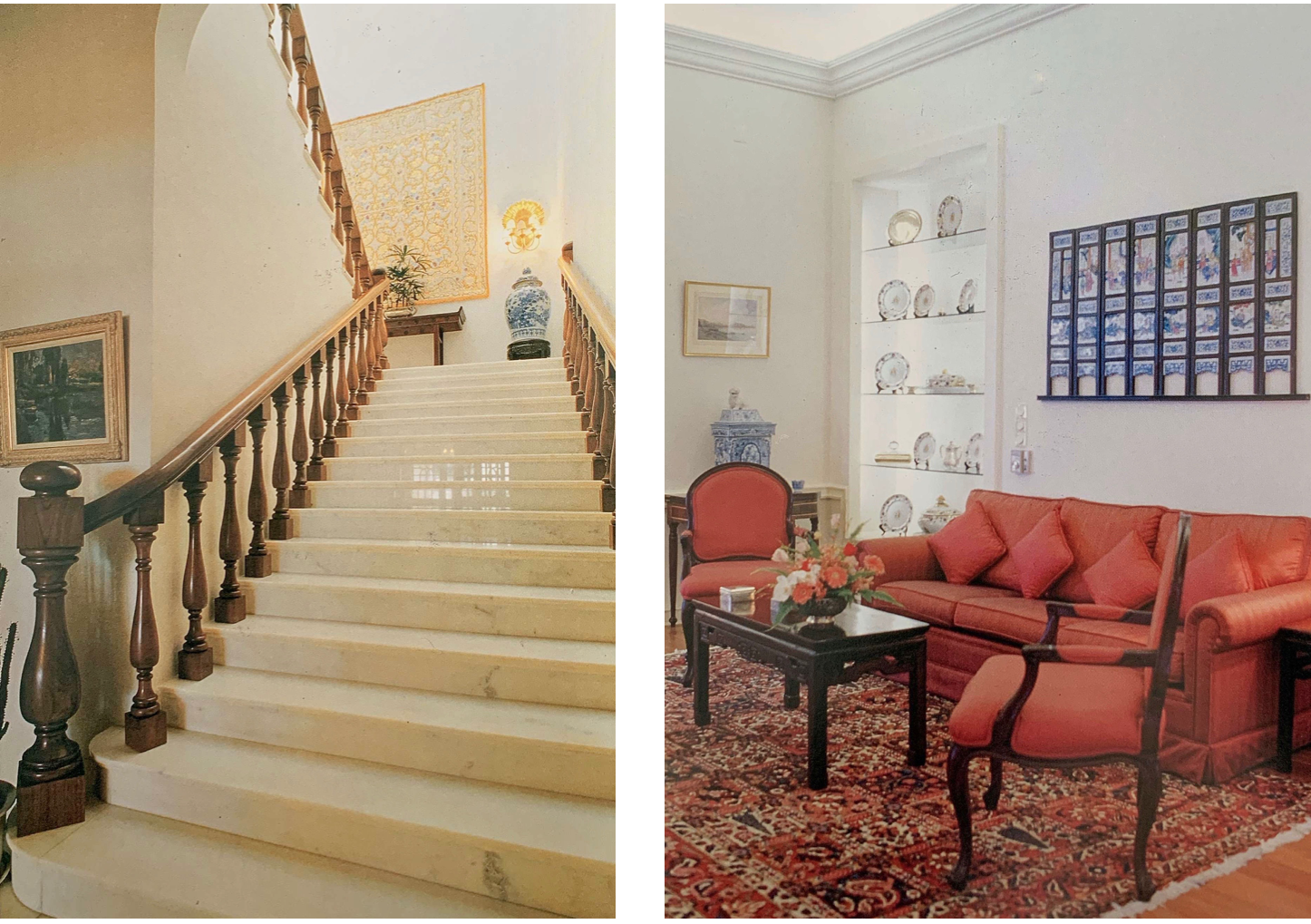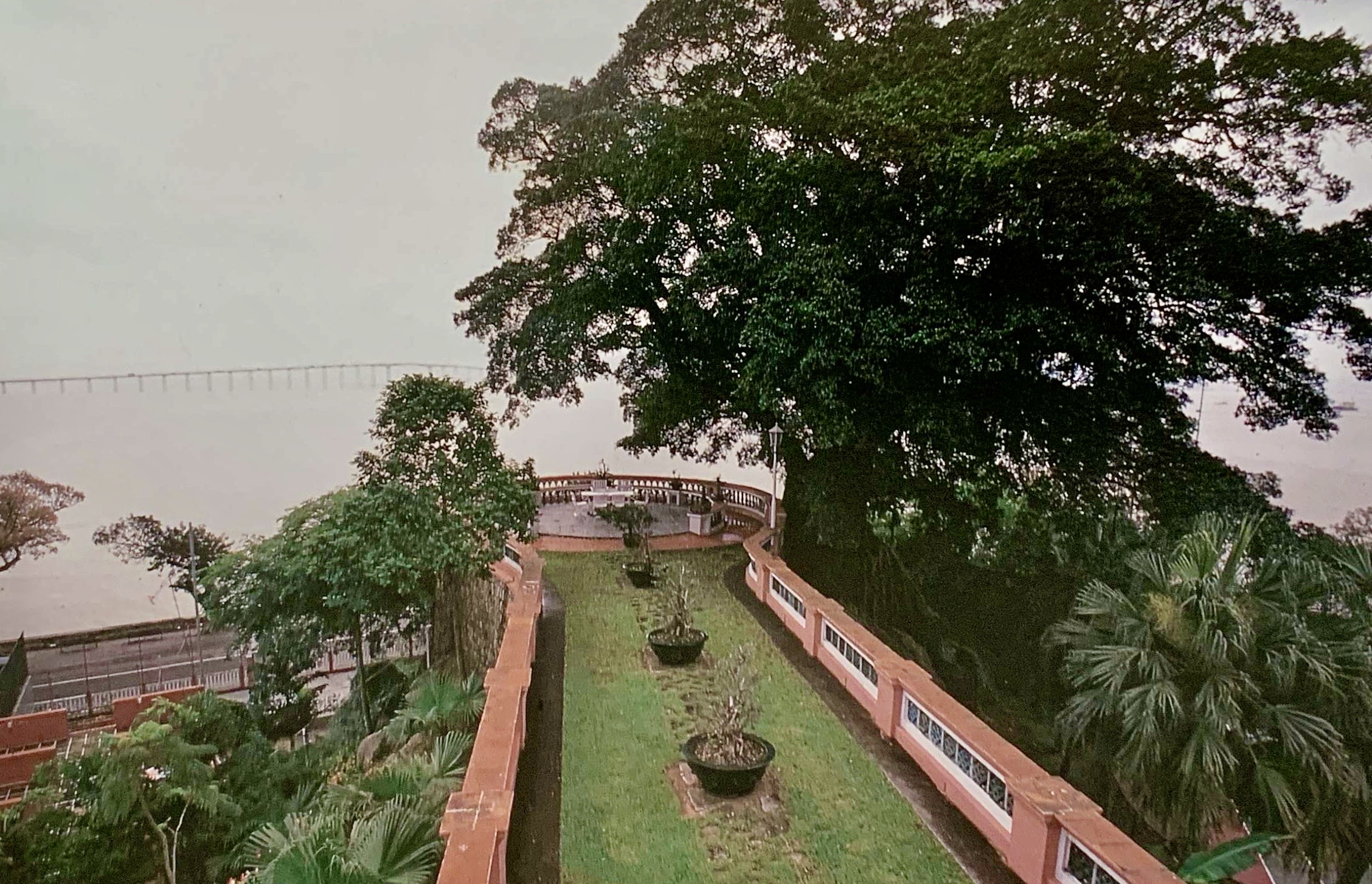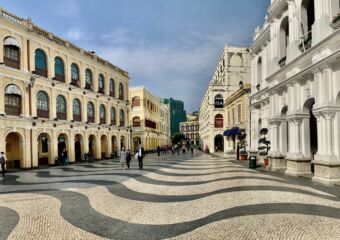If you strolled around up in the Penha area or near the lakes, across Barra, you must’ve noticed the bright pink two-story building up on a hill, surrounded by beautiful, well-guarded gardens. We’re talking about Santa Sancha Palace, which nowadays is known for being the official residence of the Macau government’s Chief Executive. However, the history of this building starts long before Ho Iat Seng, Chui Sai On or even Edmund Ho lived there. Let’s take a look into it and discover things about Macau we bet you didn’t know!
Clothes washing tank
Before getting its catchy and fancy name, the former palace was known by something it existed in close proximity with a communal clothes washing tank, the “Mainato Tank” which literally translated means something like the place where people in China wash clothes. As it happens with several old buildings around the city, no one knows for sure who built it or who were its first owners exactly. It is said, though, it was built in the mid-19th century by Macau-born architect, José Agostinho Tomás de Aquino.
Like almost everything that involves family ties and mishaps, Santa Sancha Palace has its share of stories: one of its first known owners was the Cercal Baron and Viscount–Alexandrino António de Melo–who is believed to have acquired the property in 1855. This man comes up on countless Macau stories and documents since he was one of the wealthiest of the 19th century, as well as his son, the Second Cercal Baron. The latter was born in June 1837 and his father left no will. Being an only child meant he kept the first Baron’s fortune and assets.
The son was said to lead a bohemian lifestyle, living in-between Santa Sancha Palace and Praia Grande Palace (former Governor’s house now serving as Macau Government’s headquarters). In the midst of the inheritance process, the first Baron’s wife kept Santa Sancha Palace. The property passed on to her granddaughter, Melita de Mello e Moura, and her husband, João Herculano de Moura, who then sold it to British businessman, Herbert Dent, whose family is believed to have been living in Macau since 1830.

Santa Sancha area circa 1880. Source: Álbum Macau, Sítios, Gentes e Vivências
Multitude: Residence, Hospital, Museum & More
In June 1923, Santa Sancha Palac was acquired by Portuguese governor Rodrigo José Rodrigues in the name of “the state”, thus becoming part of the government’s private assets. From then on, the palace was mainly used for official matters or to house the Portuguese governors who came to head the city. In 1881, the government also acquired Praia Grande palace, thus making use of both properties for purposes of living or work matters. Artur Tamagnini de Sousa Barbosa was one of those who chose to live in Santa Sancha Palac, in 1926. Married to Portuguese poet Maria Ana Acciaioli Tamagnini, he was Macau’s governor for three mandates. He was in charge from 1918 to 1940, taking the important task of prepping the city to deal with the consequences of the Second World War, negotiating with Japan so they understood Macau’s neutral positioning in the turmoil. In fact, Taipa Village has a street named after the former governor.
A few years later, the palace was converted into a hospital by order of Portuguese governor António José Bernardes de Miranda, due to an increase in the child mortality rate. The institution functioned for two years only; the building later housed the Ethnographic Commercial Museum Luís de Camões, but it wasn’t long until it became the official governor’s residence again. According to a book published by the Cultural Institute, the mid-20th century was a boost to Santa Sancha Palace’s life, with parties and celebrations taking place for the community.

Santa Sancha’s staircase and living room. Source: Santa Sancha Colecção Macaense (1993), by Cultural Institute
Reconstructing the old
Santa Sancha Palace underwent several embellishment and reconstruction works, especially in 1923–due to the damages caused by typhoons–some years later to refurbish the exterior, and in the 40s, where most attention was given to the palace’s interior. The architecture of this building is markedly Mediterranean from the color choice–pink was quite typical of the Pombaline era–to the balustraded terrace and garden design, this is clearly a historical sign of Portuguese presence.

Santa Sancha’s gardens overlooking the bridge. Source: Santa Sancha Colecção Macaense (1993), by Cultural Institute
The former head of ICM Cultural Heritage Department, Luís António Durão, notes, “On both sides of this (main) entrance are two sections which jut out like turrets, guarding the façade of what indisputably is the prime feature of the property as a whole”. One of the only oriental aspects in Santa Sancha Palace is the Chinese Shek Wan ceramics and the bonsai gardens stretching through the garden. However, as a whole, the property has a very Portuguese touch to it.
Santa Sancha Palace is now the official home for the Macau government’s Chief Executives since 1999. Edmund Ho, Chui Sai On and Ho Iat Seng all lived at the palace, which offers incredible views but also privacy like few buildings in Macau. Unfortunately, it’s not opened for public visits, so we let you in with some photos from a book published by the Cultural Institute in 1993.
Santa Sancha Palace Estrada de Santa Sancha, Macau



































